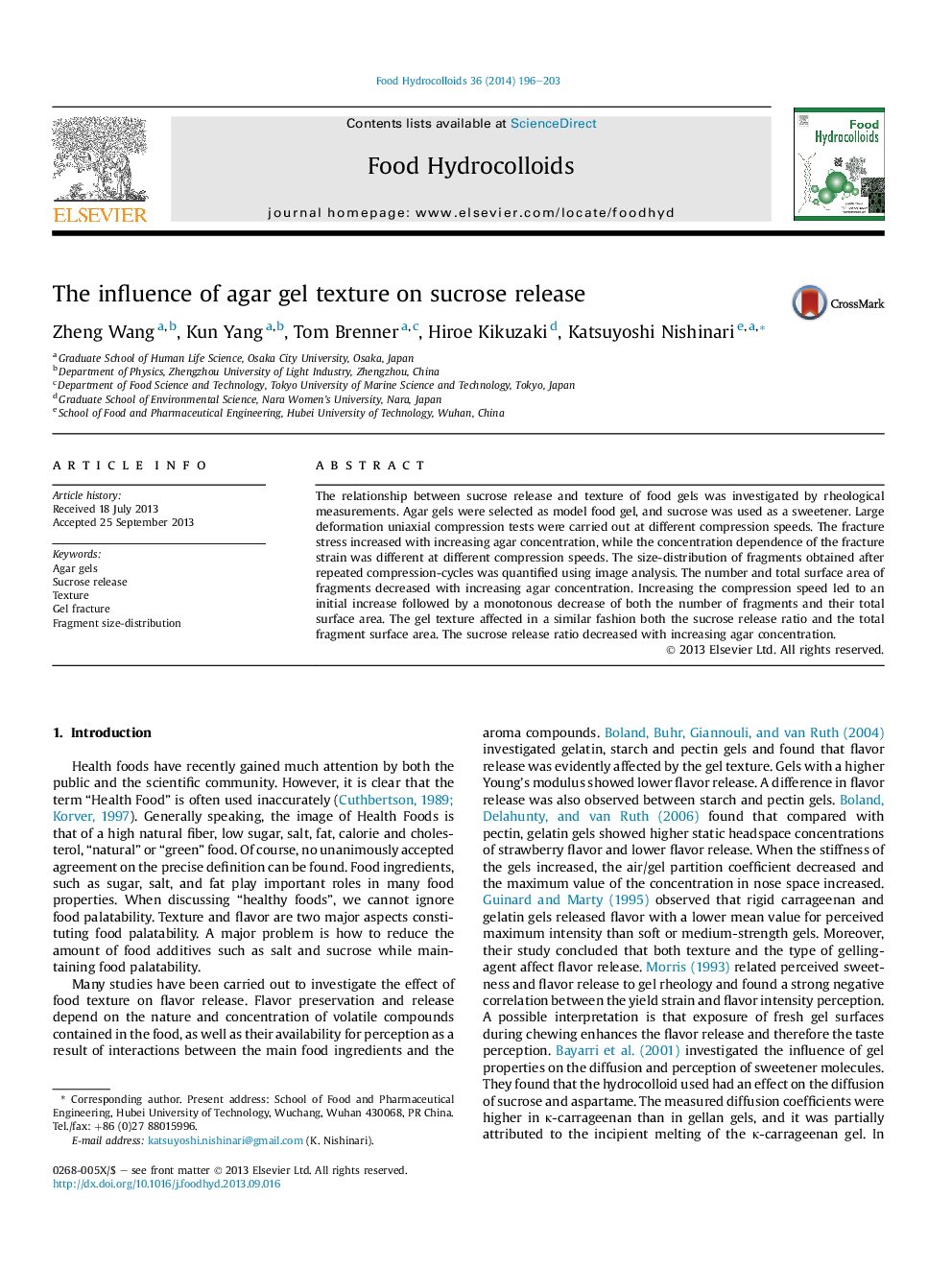| Article ID | Journal | Published Year | Pages | File Type |
|---|---|---|---|---|
| 603898 | Food Hydrocolloids | 2014 | 8 Pages |
•For sucrose release from agar gels, fracture behaviour is the dominating factor.•Sucrose release by immersion of agar gels in water is far smaller than by fracture.•Surface area of fragments decreased with increasing agar concentration.•Surface area of fragments showed a maximum at a certain compression speed.•Surface area of fragments in water was slightly larger than in artificial saliva.
The relationship between sucrose release and texture of food gels was investigated by rheological measurements. Agar gels were selected as model food gel, and sucrose was used as a sweetener. Large deformation uniaxial compression tests were carried out at different compression speeds. The fracture stress increased with increasing agar concentration, while the concentration dependence of the fracture strain was different at different compression speeds. The size-distribution of fragments obtained after repeated compression-cycles was quantified using image analysis. The number and total surface area of fragments decreased with increasing agar concentration. Increasing the compression speed led to an initial increase followed by a monotonous decrease of both the number of fragments and their total surface area. The gel texture affected in a similar fashion both the sucrose release ratio and the total fragment surface area. The sucrose release ratio decreased with increasing agar concentration.
Graphical abstractFigure optionsDownload full-size imageDownload as PowerPoint slide
